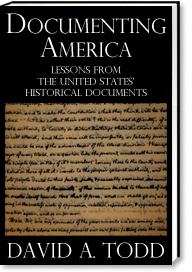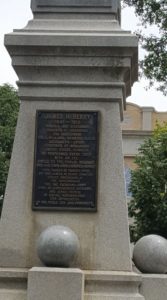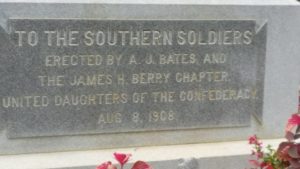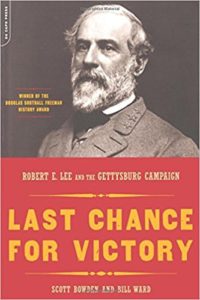 My most recently completed novel, Adam Of Jerusalem, is in the hands of two beta readers. Sunday I will put a print copy in the hands of a third. I received a little feedback from one and a little more feedback from the other. That process is working.
My most recently completed novel, Adam Of Jerusalem, is in the hands of two beta readers. Sunday I will put a print copy in the hands of a third. I received a little feedback from one and a little more feedback from the other. That process is working.
I contacted a cover designer while I was in Texas. She responded that maybe she can help me, though she is busy. I haven’t contacted her again; that’s on the schedule for today, though today looks to be very busy.
So, it’s on to the next book, which is the next in my non-fiction series. Documenting America: Making The Constitution Edition is next. In theory it’s the third book in the series, although since I did a homeschool edition of the first it is in reality the fourth. I can’t remember how much I’ve written about it before, so I think I’ll just plunge in and tell about it and where I am.

The book covers the period from 1783 to 1789. The Revolutionary War is over. During the war, the Articles of Confederation worked as a form of government. Now in peace time, however, it turns out they don’t work. The central government was a little too weak, and the states a little too independent, for government to function. Wise men saw there was a real chance of the confederation breaking apart into thirteen nations, or perhaps into a few regional nations.
In 1787 a convention was held to revise the Articles of Confederation. The delegates saw that was hopeless, and went in a different direction. They devised a whole new system of central government and wrote a document that became the Constitution.

From fall of 1787 to late 1788 the states considered this new government. One by one they ratified it. Only nine affirmative votes were needed. They got eleven, with North Carolina and Rhode Island being the only holdouts. Electors met in January-February 1789 and elected Washington to be president. He took the oath of office on April 30, 1789, and the new government was underway.
Here’s the status of the book: I’ve done most of my background reading and have identified the documents I want to use and how to organize them into chapters. I have 30 chapters identified, though some of them are tentative. I have four chapters where I have the source documents identified (The Federalist Papers) but I haven’t read the documents. I plan on starting on that tonight.
Yesterday I took a big step. I created my folder on OneDrive, created the book file, and began to seek out digital copies of my source documents. I found most from the first half of the book—all but one. I copied the full documents and added them to my book file. The fourteen source documents are there, 55 pages and 29496 words. Today (if I have time; if not tomorrow or Sunday) I’ll work on the next fifteen chapters and do the same, all except the four chapters I still have some reading to do on. I hope to have all this done by about Wednesday of next week, including the four lagging chapters.
Then comes the editing/excerpting of the source documents. I have that partly done for about eighteen chapters in my copy of the Annals Of America, where I’ve marked paragraphs to use. That’s far from complete, and some of it was done over a year ago and is thus vague in my memory, but it’s at least started.
I won’t excerpt the documents all at once. I’ll start with Chapter 1, which is a document by Alexander Hamilton about the unfair treatment of loyalists It is 5,221 words. I’ll except this down to around 1,000 (plus of minus 250, at least that’s my target; some documents demand more words be kept), then write my part of the chapter. That process is likely to take two to four days per chapter.
That may be a bit optimistic. Documents from this era are in archaic English, and reading/editing can be a chore. In the book they are all in different formats and will have to be reworked. Four days per chapter to re-read, except, write historical commentary, and tie to a current issue may take longer on average. I don’t really know for sure.
So that’s the plan. Now in retirement, possibly it will all go faster. On days when the stock market is open, and I’m making or watching trades, I plan on doing this work simultaneously. Maybe it will go faster than I think. I’m not ready to look ahead and project a publishing date. Perhaps in two weeks I’ll be ready to take a stab at that.
Oh, one thing I haven’t done yet is create my book journal. That’s another task I hope to get done today.





